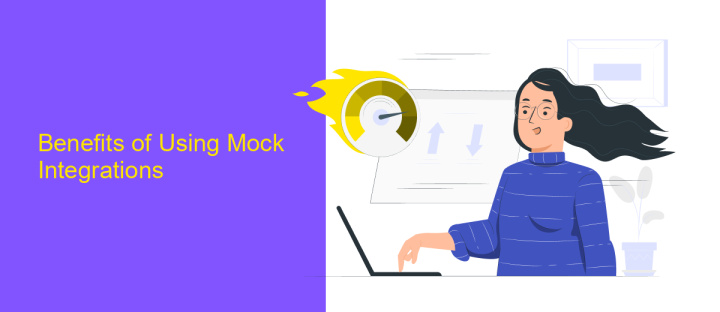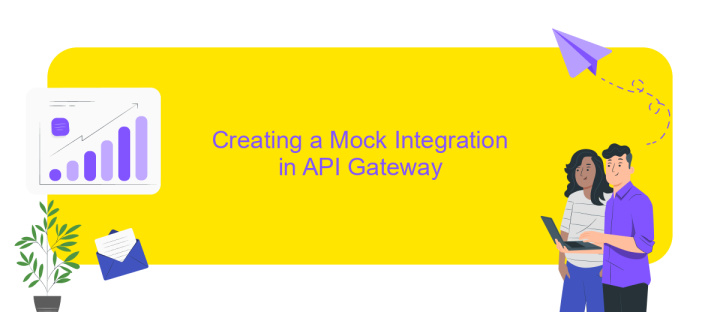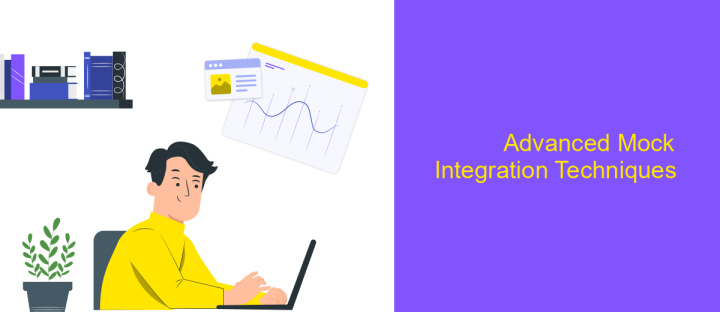API Gateway Mock Integration
In today's rapidly evolving digital landscape, efficient API management is crucial for seamless application integration and development. API Gateway Mock Integration offers a powerful solution for developers to simulate and test their APIs without backend dependencies. By enabling early-stage testing and iterative development, this approach enhances productivity and reduces time-to-market, ensuring robust and reliable API performance in production environments.
Introduction to API Gateway Mock Integrations
API Gateway Mock Integrations provide a powerful way to simulate backend responses without the need for actual backend services. This approach is particularly useful during the development and testing phases, allowing developers to test API endpoints and client applications independently of backend availability. By using mock integrations, teams can accelerate their development cycles and ensure that their applications are resilient and well-tested before deployment.
- Facilitates early testing by simulating backend responses.
- Reduces dependency on backend services during development.
- Enables parallel development of frontend and backend components.
- Helps in identifying potential issues early in the development cycle.
Implementing mock integrations within an API Gateway involves configuring the gateway to return predefined responses based on specific request patterns. This setup can be customized to mimic various scenarios, such as success responses, errors, or timeouts, providing a comprehensive testing environment. As a result, developers can focus on building robust and efficient client-side applications, confident that their code will function correctly once integrated with real backend systems.
Benefits of Using Mock Integrations

Mock integrations in API Gateway provide a streamlined approach to testing and developing APIs without the need for backend services. By simulating responses, developers can validate API functionality early in the development process, reducing the risk of errors and ensuring smoother deployments. This approach not only accelerates the development cycle but also allows teams to identify potential issues before they impact end-users. Moreover, mock integrations facilitate collaboration between front-end and back-end teams, as they can work concurrently, leading to more efficient project timelines.
Another significant benefit of using mock integrations is cost efficiency. By eliminating the need for constant backend access during the development phase, organizations can save on infrastructure expenses. Tools like ApiX-Drive can further enhance this process by providing seamless integration capabilities, allowing developers to connect various services effortlessly. This flexibility ensures that teams can easily adapt to changing requirements and maintain high-quality API performance. Overall, mock integrations offer a practical and cost-effective solution for modern API development, enabling teams to innovate and iterate rapidly while maintaining robust quality standards.
Creating a Mock Integration in API Gateway

To create a mock integration in API Gateway, you can simulate the API responses without backend implementation. This is useful for testing and prototyping. By defining a mock integration, you can return predefined responses for specific requests. This process helps in validating the API design and client-side logic before the actual backend is ready.
- Log in to the AWS Management Console and navigate to the API Gateway service.
- Create a new API or select an existing one.
- Choose the resource and method you want to mock.
- In the Integration Request section, select "Mock" as the integration type.
- Configure the Integration Response to specify the headers, status codes, and response body you want to return.
- Deploy the API to a stage to test the mock integration.
Mock integrations are a powerful feature in API Gateway, allowing developers to test various scenarios without relying on external services. This approach reduces dependencies during development and provides a flexible environment for experimentation. By using mock integrations, teams can enhance their workflow efficiency and ensure a smoother transition to production-ready APIs.
Advanced Mock Integration Techniques

Advanced mock integration techniques for API gateways allow developers to simulate complex scenarios without backend dependencies, enhancing both testing and development. By leveraging these techniques, teams can create robust and scalable mock environments that mimic real-world conditions.
One key approach is to use dynamic response generation, which allows the mock server to return different responses based on request parameters or headers. This enables more comprehensive testing of various client interactions and edge cases. Additionally, incorporating latency simulation can help developers understand how their applications behave under different network conditions.
- Dynamic Response Generation: Tailor responses based on specific request attributes to simulate various scenarios.
- Latency Simulation: Introduce artificial delays to mimic real-world network conditions and test application resilience.
- Error Simulation: Generate specific HTTP error codes to test client-side error handling mechanisms.
These advanced techniques not only enhance the testing process but also facilitate better collaboration between frontend and backend teams. By providing a realistic API simulation, developers can ensure that their applications are resilient, performant, and ready for production environments. Implementing these strategies can significantly reduce development time and improve the overall quality of software releases.


Real-World Use Cases and Examples
API Gateway Mock Integration is invaluable for developers seeking to simulate and test their APIs before full-scale deployment. A common use case is during the development phase, where teams can create mock responses to test how their applications handle different scenarios without needing a live backend. This approach is particularly beneficial for front-end developers who can continue their work independently, ensuring that the application behaves as expected even when the backend is still under development. By using mock integrations, developers can identify potential issues early, reducing time and resources spent on debugging later.
Another real-world application is in automated testing environments. Mock integrations allow for consistent and reliable test conditions, which is crucial for continuous integration and delivery pipelines. Services like ApiX-Drive can be instrumental in this process by providing tools to streamline the setup of these integrations. They enable seamless connectivity between various applications, ensuring that data flows smoothly even during testing phases. This capability not only accelerates the development lifecycle but also enhances the overall quality of the software by allowing for thorough testing under controlled conditions.
FAQ
What is API Gateway Mock Integration?
How can I set up a mock integration in API Gateway?
Why should I use mock integration during development?
Can mock integration handle dynamic data?
How can I automate the integration and testing of APIs using tools?
Routine tasks take a lot of time from employees? Do they burn out, do not have enough working day for the main duties and important things? Do you understand that the only way out of this situation in modern realities is automation? Try Apix-Drive for free and make sure that the online connector in 5 minutes of setting up integration will remove a significant part of the routine from your life and free up time for you and your employees.

